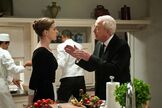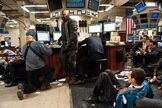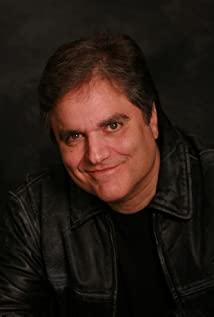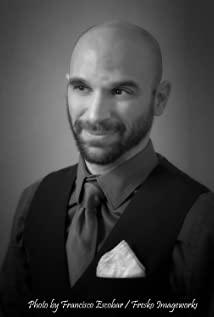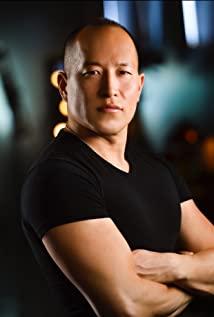Compared to the second Joker's decisive belief in anarchy, Batman can't cross the bottom line despite being tortured. I can't find such a one-on-one ending in this film. I can't understand the concept of the Shadow Warrior Alliance, and I can't accept it very much, so I have doubts about those who believe in it, and the shocking power of the villain is weakened.
The depiction of character relationships is important in any film. Compared with the father in the first part (the repeated scene of the father going down to the young Bruce), Rachel, Alfred; Rachel, Alfred, Two-faced, Joker in the second part (this is also the second progress. place, let the villain be the protagonist's dream), in the third part, it is difficult to find a supporting role that really affects the protagonist's nerves.
Nolan's ability to handle the feelings of men and women seems to be recognized as not good, but in the second part I can still see Rachel's influence on Batman, some of which are from the side, such as his attitude towards rival Harvey Dent, mistaken for Rachel Qiu chose himself, and had a side pity for Dent. Although the actors and directors have kept a low profile on the emotional part of Batman and Rachel, considering the depressing and gloomy atmosphere of the story, such a treatment is quite in line with the atmosphere of the movie. In the third installment, Batman's emotional drama is handled very poorly, and it is completely confusing how to get together with the other two female characters. And when it is learned that Rachel's real choice is not him, Batman's emotional breakdown should also be a very powerful and ideological conflict. However, the movie does not show it, close to Batman's respected old housekeeper. A few hard words "How dare you use Rachel to stop me." are not shocking enough.
How to reflect the theme: rise. Here is a comparison with the first one. The first one is about Begin. How to reflect Begin? From being shot to death by his parents when he was a child; to participating in the murderer's bail meeting and trying to avenge his parents, but seeing his father's enemy killed by the gang; to being taught by his girlfriend and bravely breaking into the gang's den; to being humiliated by the black boss and running away from home in confusion The way to punish crimes; to meet a ninja teacher, boasting that he can clear the harm and the right way to eliminate fear; to the choice between the bad guy who should kill or not to kill in front of the ninja master; finally to return home and be led by bats For inspiration, with the final idea of Batman. I am shocked when I write this. I am just recalling the plot step by step. I didn't expect that the plot contains so many turning points, and they are one after another, link by link, very make sense. So this is also the reason why the audience feels make sense when they look at it. It can be seen that in the first part, in order to explain the Batman Begin clearly, a lot of foreshadowing was done and a lot of effort was spent.
And when it comes to the rise of how the third part behaves: keep climbing the wall! ! ! This involves a very important issue: film is a visual art, and mental description is destined to be its inherent weakness compared with books. Only directors like Wong Kar-wai dare to describe psychologically with movies and books. Therefore, in order to make the audience feel the same, the imaginary must be realized: you can't expect the audience to guess the emotion if you don't give a line or a plot. You're like the bald doctor who said: "If you want to really climb out, just learn from that kid, don't use a rope, the fear of failure will give you strength." Words like this are a good clue for the audience (figure out the characters Emotional clues), what is missing is more clues like this. How to use such clues to connect one by one and string together a psychological change that makes sense is seriously lacking in this film.
Another highlight of the psychological change, according to my understanding, should be how Bruce got out of the shadow of being unable to integrate into normal life in the past 8 years. I think this is the only one that explains clearly. At the end of the montage, the old housekeeper is having coffee by the roadside. When the shop sees Bruce's scene, people are moved to tears. Try to understand Bruce's psychology during those eight years, will it be like the feeling of a veteran soldier, War hero in peace time, losing the goal of struggle, living in dead love, unable to walk out of the darkness. So when I write here, I feel that the movie is a bit contradictory. Since this problem is thrown out, and I immediately throw Batman into another more sinister battle, then his psychological trauma of not being able to integrate into society is again. How was it cured? Maybe it was because of the greater danger that he saw the value of happiness, but didn't the thorn in Miranda's back cause him more damage? And it's too much to be with Catwoman in the end.
Since this one lacks the delicate descriptions of psychological changes in the previous two, and the time is the same, where is the other time spent?
Basically two parts: 1. Intro of the characters (Bane's bomber scene, Catwoman stealing the necklace) and 2. The big game that has been plotted for a long time. This structure is actually very similar to the second film, which is also a stunning clown debut scene at the beginning and dazzling one after another in the whole film. So what's the difference between the two? One thing is obvious: the Joker's innings are one after the other, dazzling, and the atmosphere dare not kick, from the beginning of robbing the gangster bank; to pretending to be dead to trap and kill the gangster; to the video killing Batman imitators, claiming that Batman is the first. One day without removing the mask, someone died in one day; to the three-way assassination of the police chief, the prosecutor, and the DA; to the premeditated murder of the mayor on the day of the police chief's funeral; to the pursuit of Harvey Dent, captured by Batman Gordan. Seeing this is already dazzling, everyone thought they could breathe a sigh of relief, but they didn't. . . Pretending to be caught and actually trying to get a gangster accountant; setting up a scheme to kidnap Harvey and Rachel and only one can be saved; to declaring that Batman's accountant is not dead and blowing up a hospital, causing social unrest; to induce Harvey Dent, nudge Make him two-faced at last; to the final game of two ships. So majestic, one wave after another.
And how did it perform in the third part? There's only one stupid big game, and the average person can't understand what Bane means by putting the bomb detonator in the hands of any of you. And this oversized game can also feel a little deliberate.
Judgment
View more about The Dark Knight Rises reviews



